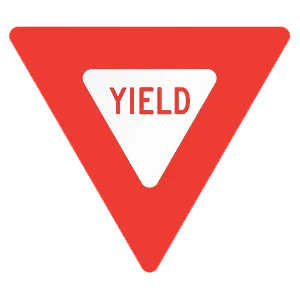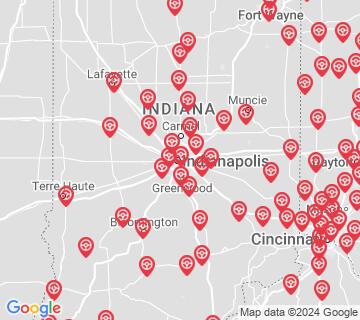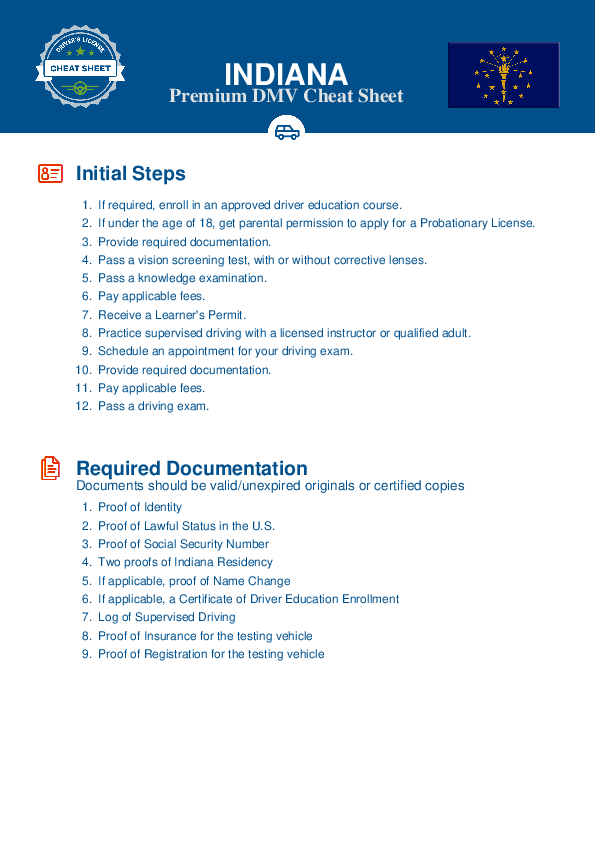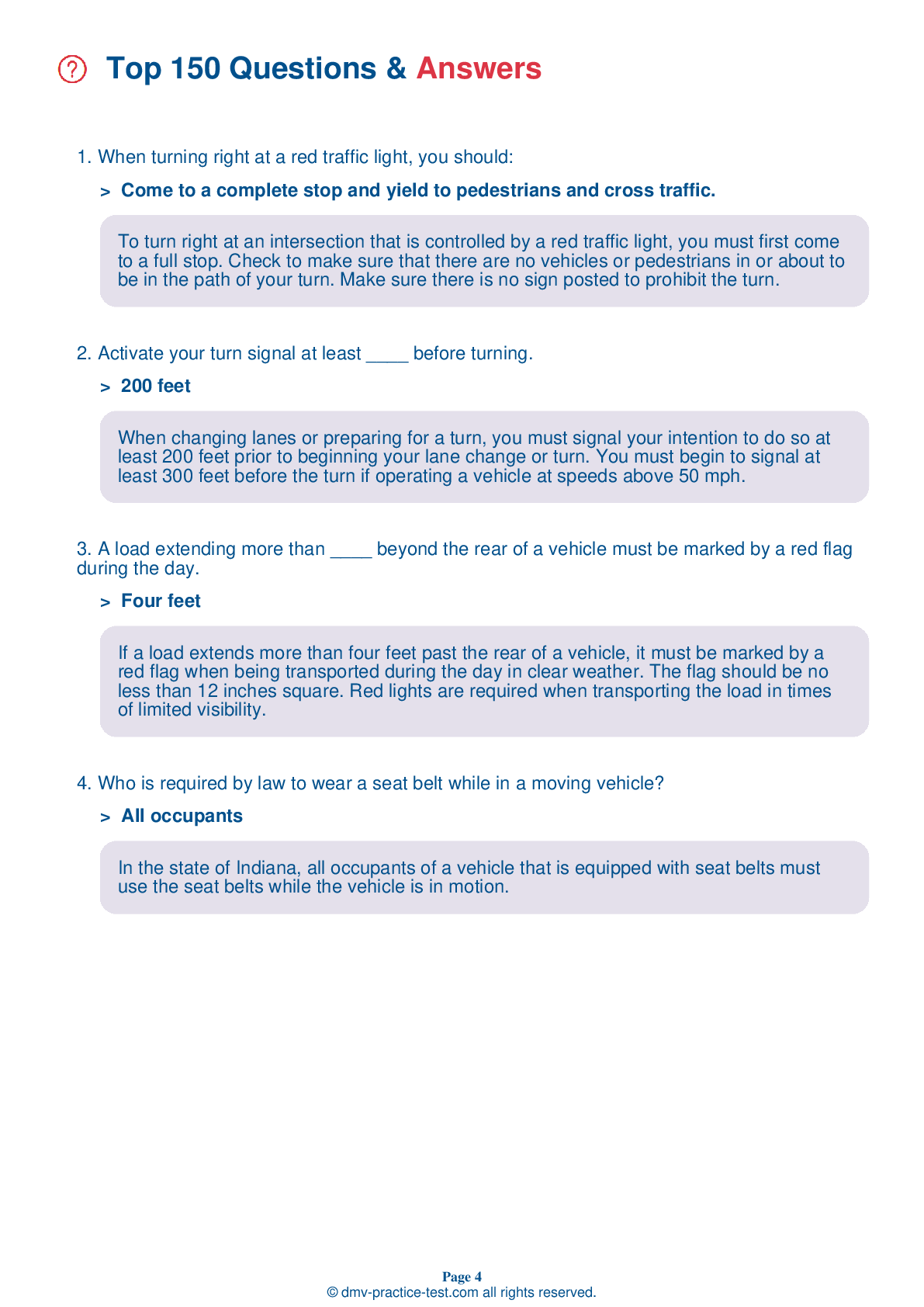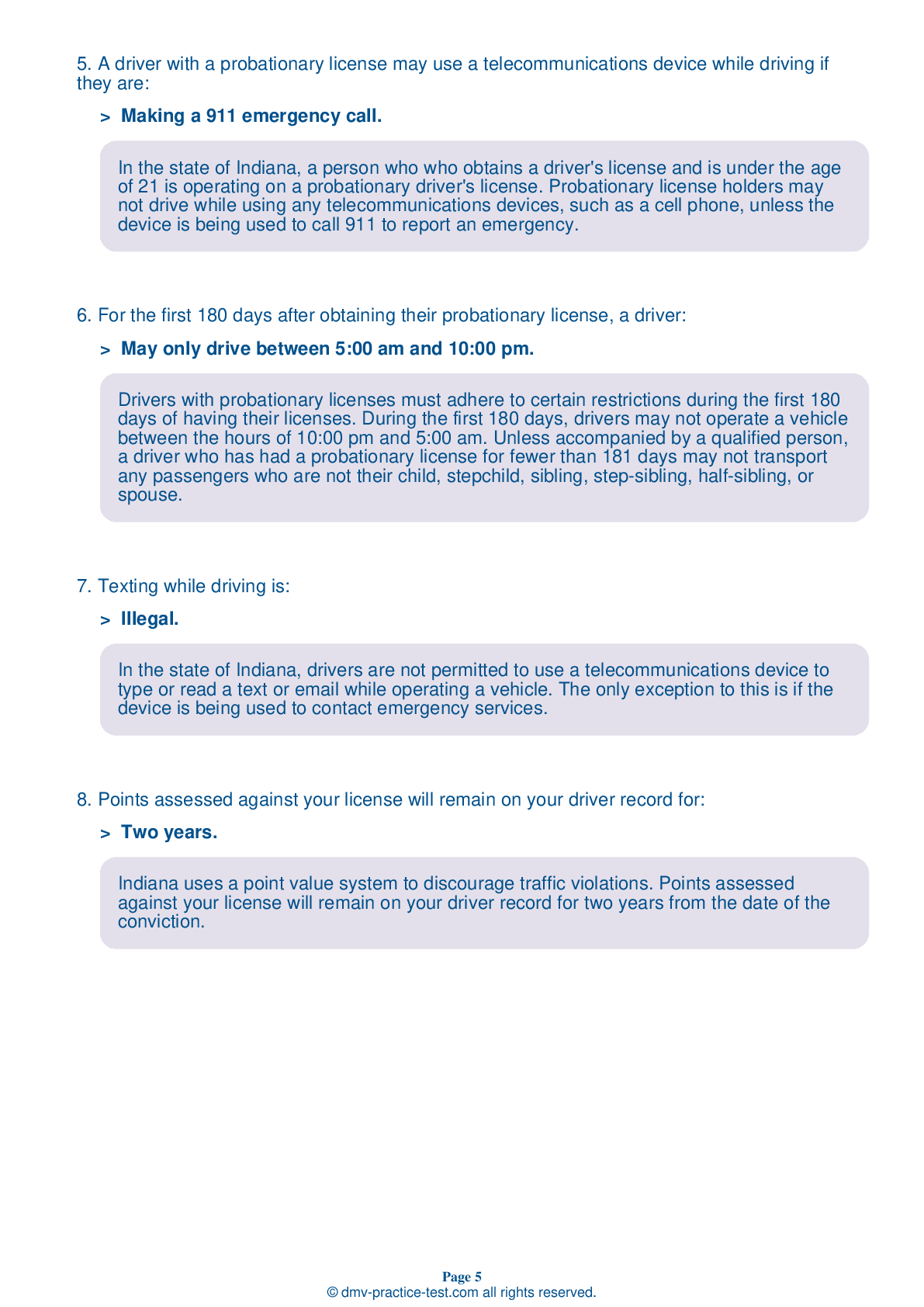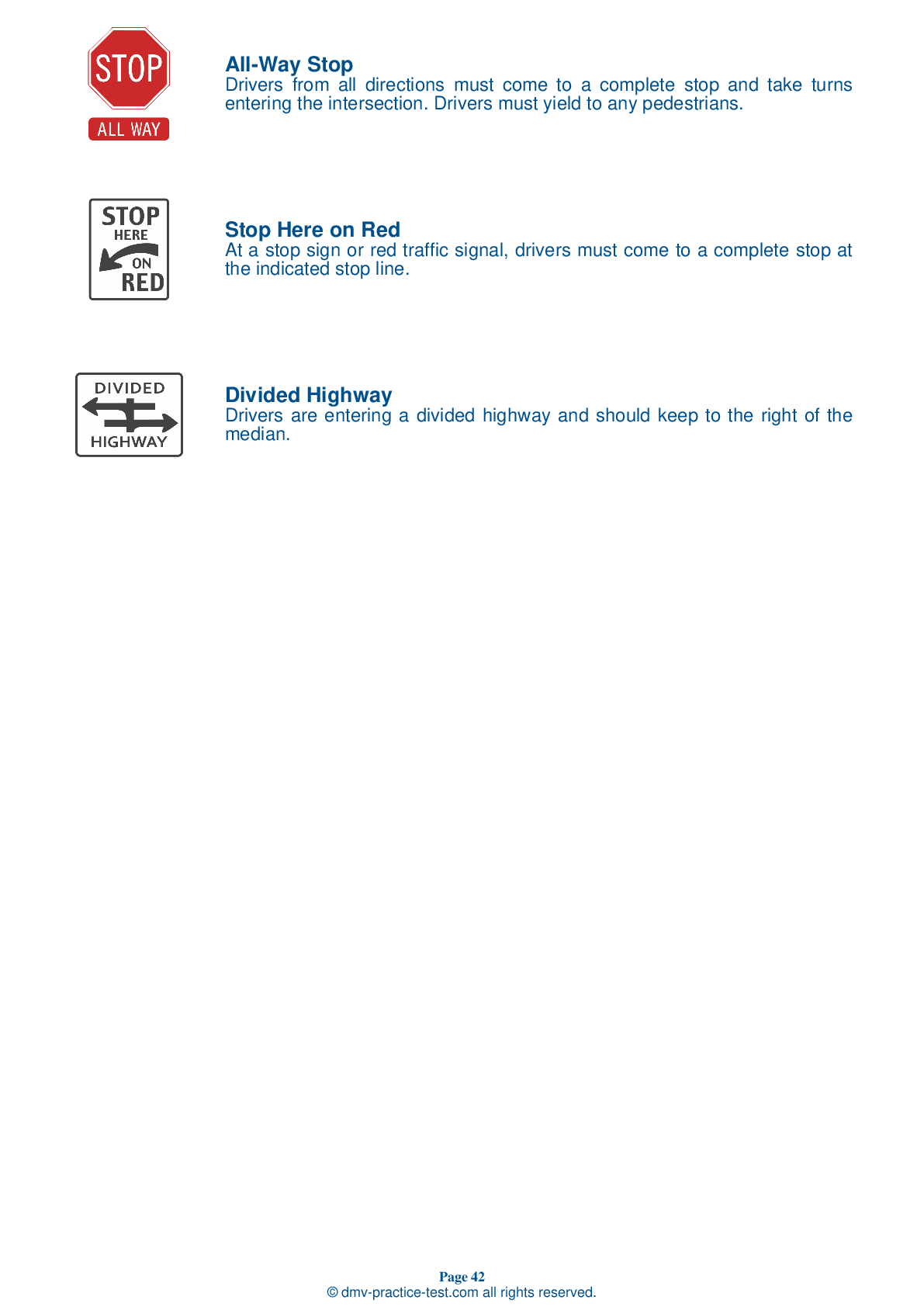FREE Indiana DMV Practice Test #13 Page 3 of 5
This set of Indiana DMV practise tests has been updated for January 2025. It includes questions based on the Indiana Driver Handbook's most significant traffic signals and laws for 2025. Use actual questions that are very similar (often identical!) to the DMV driving permit test and driver's licence exam to study for the DMV driving permit test and driver's licence exam.
On the practise exam, each question gets a tip and explanation to help you remember the concepts. The written component of the official Indiana DMV test will include questions about traffic rules, traffic signs, and driving statutes, as well as information from the Driver Handbook.
To obtain a passing grade, you must correctly answer 44 of the 50 questions. Take our DMV practise exam to help you prepare for your Indiana instruction permit or driver's licence.
The DMV exam is available in several languages.
Using any kind of testing assistance will result in an automatic fail, and the DMV may take additional action against your driver's licence, so stay away from it.
17 . If two drivers arrive at the same time to a four-way intersection controlled by stop signs:
Yield the right-of-way to the driver on your right at a four-way intersection if you both arrive to the intersection at the same time. You may then proceed when it is safe to do so.
18 . A diamond-shaped sign:
Diamond-shaped signs warn drivers of existing or potential driving hazards. You will usually see these signs in yellow or orange.
19 . A flashing red signal means:
Like a stop sign, a red flashing light at an intersection means that you must come to a complete stop before entering the intersection. If you are facing a red flashing light at an intersection at which cross traffic is not required to stop, you may proceed only when the intersection is clear and when you will not interfere with the right-of-way of cross traffic.
20 . While backing, you should:
When intending to back up, always check behind your vehicle before getting in. Children and small objects are difficult to see from the driver’s seat. While backing, turn your head so you can see through the rear window. Do not depend only on your mirrors or sensors.
21 . A flashing red traffic signal at an intersection has the same requirements as:
When approaching a flashing red signal, you must stop and yield to all traffic that does not have to stop.
22 . A solid yellow line on your side of the centerline means:
A solid yellow line next to your lane means that passing is not permitted from your direction.
23 . This sign means:
